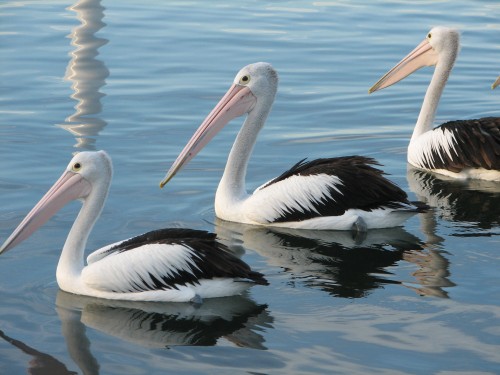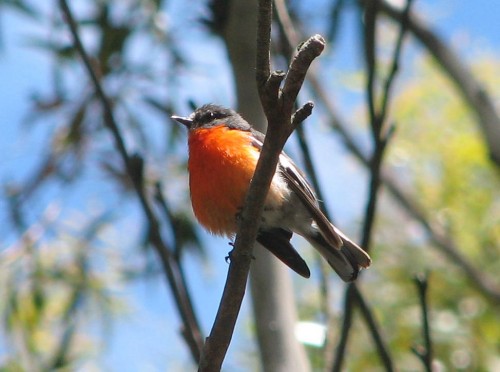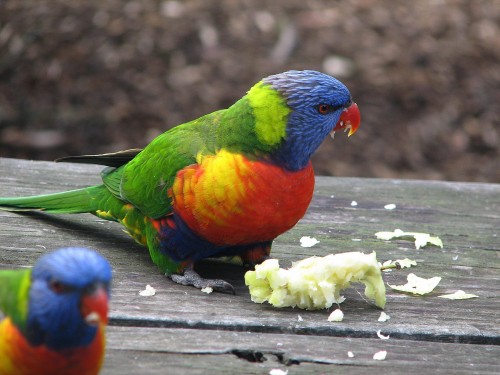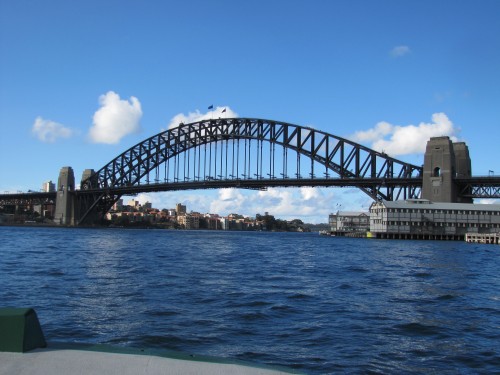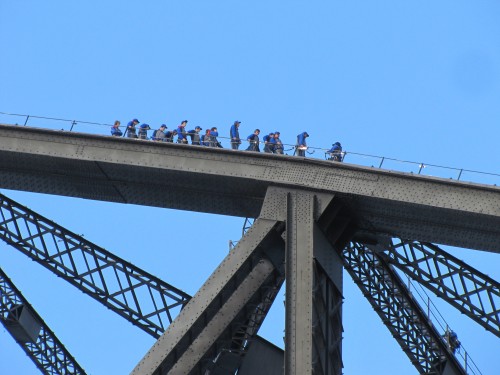Happy 10th birthday to Trevor’s Birding
HAPPY BIRTHDAY to TREVOR’S BIRDING.
10 YEARS OLD TODAY
I started blogging about Australian Birds ten years ago today.
What an interesting journey. It has, in part, satisfied some of my writing dreams. Even though I have published over 4000 blog articles in that time, on this and other sites, it has still amazed me of the result. Over all of my sites I have had over a million pageviews, over 7000 comments, over half a million readers from over 200 countries and a steady, but modest, income stream.
Trevor’s Birding, a companion site to this one, features photos and articles about Australian birds. Over the years I have travelled to many places here in Australia to capture photos of our wonderful and colourful birds. I have also taken photos and written about some birds I have observed in other countries, like Thailand, Nepal, Ethiopia, Morocco, and Spain. This site actually started on another platform and has had several upgrades over the years. I am hoping for some exciting new developments in the coming months, so stay tuned.
Trevor’s Travels, another companion site I write, and this one features articles about and photos of places I visit. These articles cover several states of Australia as well as Thailand, Nepal, Ethiopia, Morocco and Spain. I have many more photos yet to share on that site too. This site celebrates its 10th birthday late this year.
Of course, the site you are reading at present, Trevor’s Writing, has its 10th birthday in March next year. Many more articles to come and some interesting developments in the coming months.
And did I mention I also maintain and do some of the writing for our church website here?
This all keeps me busy writing.
You can also follow me on Facebook and Twitter.
I hope you like the bird photos featured today.
Happy writing
Trevor
Further reading
- Trevor’s Birding – where I write about Australian Birds
- Trevor’s Travels – articles about and photos of my travels in Australia, Thailand, Nepal, Ethiopia, Morocco, Spain.
Review: “I am Malala”

Every now and then one comes across a book or a film which has a lasting impact upon one’s life.
This is one such book.
The story of Malala Yousafzai is very well documented, so I only really need to give a bare outline here for the remote possibility that a reader may not have heard of her. Growing up in Pakistan Malala and her teacher father became known throughout their country – and worldwide – for their attempts to ensure that all children have access to education, and in particular girls.
During most of her life, however, Malala has seen the obstruction to this fundamental right by various leaders and influencers in Pakistan – and Afghanistan as well. The Taliban actively discouraged girls from becoming educated. Their lack of success led to them openly attacking whole communities, forcing the closure of hundreds of schools and even destroying them. In this process many thousands were killed or became refugees in their own country.
In this book, Malala graphically depicts her personal struggle to be educated, her father’s unwavering support and determination, and the terrible cost they as a family endured, culminating in her being shot in the head while on her school bus by a Taliban adherent. She plainly explains all of this this against the current political and religious environment, and her determination to continue.
The latter part of the book gives an almost matter-of-fact account of her treatment, first in Pakistan, then in the UK, and her eventual recovery. Despite the attack she seems to have no malice or bitterness about what happened but rather an even greater desire – a firm resolve – to see all children, and especially girls, be fully educated, and this on a global scale. Subsequently she has spoken personally to many world leaders, addressed the United Nations, and more recently been awarded the ultimate accolade – the Nobel Peace Prize, at age 17, the youngest ever recipient.
She is still a teenager.
I think that it is incredible to realise that she was only born in 1997. She has already achieved so much in her short life. Her life, and this book, should stand as an inspiration to the current generation of young people around the globe – and it am sure it will continue to be an inspiration to generations to come.
Highly recommended.
Good reading.
Trevor
Writing prompt: Sydney Harbour
The Sydney Harbour Bridge is such an iconic structure it is instantly recognisable the world over. Whenever we visit our son and our grandchildren in Sydney we cross this wonderful bridge a number of times on every visit. They live several railway stations north of the bridge or about an hour’s walk from home.
We have driven over the bridge, gone over it numerous times on trains, walked across it and gone under it on ferries. The only thing I haven’t done is the Bridge Climb OVER it (see photo below). Getting a bit old and shaky in the knees for that. Should have done it for my 60th Birthday Bash as I had planned.
Writing prompts:
- If you have been to Sydney write about your experiences.
- If you have been on the Bridge Climb describe the sensation of being up so high.
- If you have not been on the climb, imagine what it would be like, describing the experiences.
- Notice the huge pylons on each side and at each end of the Sydney Harbour Bridge. Imagine a murder takes place inside one of the towers. Write a short story about how this occurs, and the aftermath.
- Write about the most unusual bridge you have ever seen.
- Write about any rickety, unsafe or downright dangerous bridge you have crossed. (For me that would have to be the suspension bridges crossed while trekking in the Everest region of Nepal. DON”T look down!)
- Write about a ferry ride on Sydney Harbour that turns very sour; someone is murdered or thrown overboard.
- Write a poem about the beautiful harbour, the waves or the bridge itself.
Good writing.
Review: The dangerous world of butterflies
The dangerous world of butterflies: the startling subculture of criminals, collectors and conservationists written by Peter Laufer, PhD.
This is a book I probably would have glanced at in a bookshop – and not taken much interest in it. My copy came into my possession via my wife who bought it for me for Christmas. The title and subject matter intrigued her and she took a gamble, hoping I would enjoy it.
Her gamble paid off; at times I could hardly put it down. The author, Peter Laufer, a journalist of note, had tired of writing about serious, world shattering events and theatres of war, and jokingly said at a book launch that his next book would be “about butterflies and flowers.” The idea stuck with him, but he didn’t realise how life changing that throw-away line would prove to be.
The more he delved into the world of butterflies, the more he became intrigued, fascinated and amazed. The book is written about three main aspects of butterflies: crime, collecting, and conservation. Rare and beautiful butterflies are much sought after and there is a thriving black market for the most sought after. Collectors will go to extraordinary lengths – usually illegal – to add to their hoard of specimens mounted on card with a pin. Conservationists, however, try desperately to protect the last few surviving beauties. It is a dangerous world indeed, not the least for the poor insects themselves struggling to exist in an increasingly hazardous world.
Laufer deals also with valiant attempts to breed endangered species, detailing the amazing life cycle of these beautiful, delicate miracles of nature. Large breeding centres also sell large quantities of more common species for release at weddings and other ceremonies. I’d never heard of this “use” of butterflies but the idea appeals to me. Apparently you can buy butterflies for this purpose here in Australia, though it remains mostly an American custom.
Highly recommended.
Forgetting the obvious
Late last week our next door neighbour asked permission to enter our property over the weekend. He was planning to trim some of our trees leaning over his fence. Not only would this be much tidier, it would reduce the fire hazard on his property, something we have to be very aware of here in South Australia, especially as another summer is approaching rapidly.
As he started Friday afternoon I went over to chat to him, asking for more details on what he proposed to do. One of the tools he had hired was a chainsaw with a long extension arm on it. At full extension he could reach nearly 5 metres while standing safely on the ground. I immediately saw the potential regarding one tree in our garden.
I had forgotten the obvious.
A few months ago I had tried climbing up a ladder to lop the top two thirds of a tree near the house. From about two in the afternoon this tree shades our PV solar panels, diminishing their efficiency for the rest of the afternoon. Even cutting this tree to the base will not kill it. In fact, mallee trees thrive on this trimming and will regrow quickly. My attempt to trim the tree was unsuccessful; it was unsafe at that height.
I had forgotten the obvious.
The obvious solution was to hire one of those very useful chainsaws with an extension. Doh. I offered to help my neighbour in his trimming – if he would come over and trim my tree. In about ten minutes the job was done. I then spent the next few hours helping him in return, offering to tidy up after him cutting and getting rid of the cut wood. Next winter we will keep warm with this wood.
Forgetting the obvious
When we are writing we can so easily forget the obvious. We blaze away writing a story, poem, article or novel and then shoot the manuscript off to a publisher. Then we wonder why it didn’t get accepted when it returns many months later. Some of the obvious things we forget include:
- Proofreading for spelling errors.
- Checking that the grammar is correct.
- Rewriting repetitive or hard to understand parts.
- Checking the publishers requirements; don’t send a poem to a car enthusiast’s magazine – unless they specifically are asking for poems about cars.
- Check the maximum (and often the minimum) word count required; this is especially important in writing competitions.
- Get someone else to read your writing, checking for understanding, grammar and spelling. And typos.
- Keep a copy of your work.
- Check you’ve included your name and contact details.
- Keep writing. Don’t twiddle your thumbs while waiting for the publisher to reply; it could be months!
Good writing.
